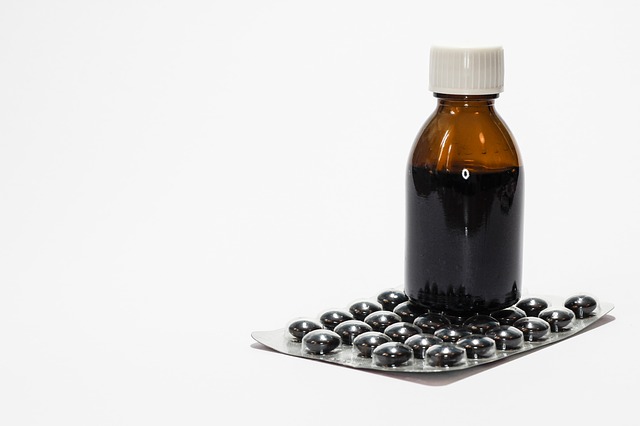Whooping cough: What are the causes of a mucoid cough, even without a temperature?

Coughing is a defence mechanism of the body. It ensures the passage of the airways. The mucus formed by it performs a defensive function. But in some diseases it is formed in an increased amount and needs to be coughed up. It occurs as a symptom in various diseases.
A whooping cough is a cough associated with expectoration and is also called a productive cough.
As such, coughing is a physiological protective mechanism. With it, the body tries to remove an obstruction from the airways and ensure their free passage.
In most cases, a wet cough is associated with the expectoration of mucus, which accumulates in the upper airways, but is also a symptom of other respiratory diseases. Often a dry cough becomes a wet cough.
Damp cough in diseases
A productive cough is most often associated with respiratory diseases and diseases of the respiratory system. It is part of bacterial and viral infections that can attack the respiratory system.
Coughing is sometimes associated with various diseases, such as cystic fibrosis, a serious hereditary disease caused by a gene mutation that affects the lungs. Coughing up mucus is associated with difficulty breathing.
Coughing up mucus with blood may also be present in tuberculosis or cancer of the airways or lungs. The pulmonary form of tuberculosis is a highly infectious disease.
If the infection spreads further, for example through the bloodstream, it can affect other parts of the body - for example, the kidneys, brain, bones, joints, skin or digestive system. Sometimes a dry and irritating cough can alternate with a productive cough in tuberculosis.
Pleurisy can also present with a wet cough. It is an inflammation of the pleura, which is a thin lining of the chest cavity made up of flat cells. The pleura has two sheets. The first sheet encloses the lungs and the second sheet adjoins the chest. These two sheets rub against each other when breathing.
Pleurisy can be a form of dry and moist inflammation. In the dry form, an irritating and dry cough is typical. In the moist form, a wet cough, sometimes fever and breathing problems are typical.
Cough medicines

The cough itself will only go away after the cause, i.e. the infection, has been cured. Antibiotics are used for bacterial coughs, while treatment for viral coughs is symptomatic. Antiviral drugs are used only in very complicated cases.
A dry cough is irritating and unpleasant. It is relieved and suppressed by means of antitussives. They are known professionally as antitussives. A productive cough needs to be stimulated and the mucus expelled from the airways.
The treatment of a wet cough is with the help of medicines that help moisten the mucus and encourage it to flow out of the airways. Expectorant medicines are called expectorants. Expectorants are divided into mucolytics (secretory medicines) and secretory medicines.
Mucolytics reduce the stiffness of mucus and thus improve expectoration. Secretomotor agents are substances that promote the movement of cilia, which are on the surface of the lining of the airways. Their movement moves mucus upwards, out of the airways.
Upper airways
Most often, a wet cough is accompanied by diseases of the upper respiratory tract. Nasopharyngitis is one example. This is an infection that is relatively common. It is spread through the air and by direct contact with an infected person. It can be viral or bacterial in nature.
Throat pain and difficulty swallowing are also common accompanying symptoms.
Similarly, sinusitis is also known as sinusitis. Even with rhinitis, mucus build-up is a problem. In young children and babies, a complication is mucus leaking into the lower airways.
Damp cough in children at night occurs mainly because the position of the child encourages this outflow of mucus. Yet this kind of damp cough does not have to be accompanied by a raised temperature or fever.

Coughing in asthma
In some cases, asthma is accompanied by a productive cough. Asthma is essentially a disease of the immune system that affects the airways. Typically, asthma attacks occur when the bronchi and windpipes narrow, mucus production increases and the person has difficulty breathing.
However, asthma also causes a dry cough, especially during the night when it disturbs sleep. Asthma itself is an incurable disease, but its symptoms can be significantly reduced, especially by pharmacological means.
Lower respiratory tract and wet cough
Whooping cough is also present as a symptom of lower respiratory tract disease. In chronic obstructive pulmonary disease, it is a condition where an obstruction (mucus) forms in the airways. This prevents a person from breathing fully.
The disease most often affects smokers and people who work professionally in dusty environments, especially in manufacturing and various industries, mining.
bronchitis is also a problem, when there is acute or chronic inflammation of the inner lining of the lower respiratory tract. In acute bronchitis, it is most often a viral or bacterial disease.
Chronic bronchitis can also be caused by environmental influences, such as smoking, dust or air pollution. Fatigue, first dry and later wet coughs are typical. This disease is very common in society.
The bronchial tubes may also be affected by pathological enlargement due to some congenital anomaly or disease. This condition is also called bronchiectasis. The enlargement is usually accompanied by chronic bronchitis.

It occurs most often in preschool and school-age children. It often has a postobstructive cause. This is a condition after inhalation of a foreign body into the lower airways. Another type is congenital, which arises because of underdeveloped airway cartilage.
A prolonged (chronic) productive cough is present in children, especially in the morning. It will abate during the day. Breathing is labored, and among the symptoms are so-called stubbed toes.
Traditionally, dry and later wet coughs are also found in pneumonia, when various types of inflammation of the lung tissue occur. The person also has an elevated temperature, coughs up mucus and has headaches and chest pains.
Pneumonia can be similarly infectious and non-infectious. It most affects newborns and people over the age of 60. In more severe forms, shortness of breath and breathing problems are typical. If the origin is viral, the symptoms are similar to influenza.
Video about persistent wet cough
Herbs used forDamp cough
Interesting resources
Related










